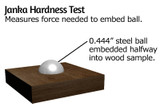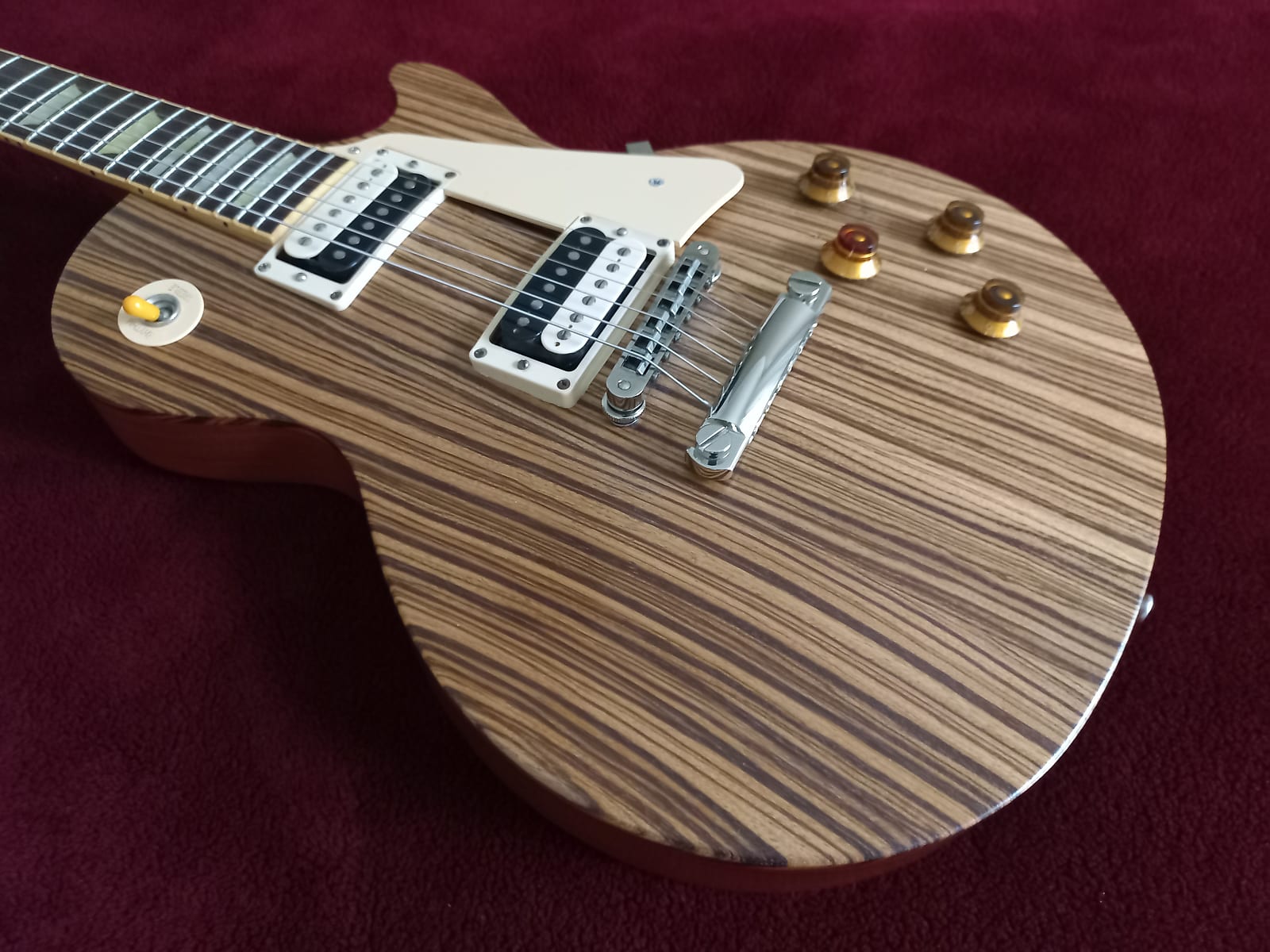The ABCs of Hardwood

A is for Acacia
We’re starting off the ABCs of hardwood with a little bit of a cheat, because acacia isn’t a tree: it’s a shrub! This Australian shrub yields wood that’s renowned for its beauty, durability, and versatility. Acacia wood is rumored to have been used in the construction of the Ark of the Covenant.
Fun Fact: The most isolated tree in the world, Arbre du Ténéré in Niger, was an acacia! The tree was destroyed by a drunk driver in 1973; a metal statue now stands in its place.
B is for Birch
The broadleaved deciduous birch tree grows all over Europe, Asia, and North America. Different species can be found from Mongolia to Quebec, New England to Iran. Its light, satiny wood makes beautiful floors and is also a popular choice for veneer.
Fun Fact: Birch is the national tree of Finland and Russia.
C is for Cabin Grade
Cabin grade refers to second quality hardwood flooring. Don’t be put off by the thought of seconds, though! A lot of our customers love cabin grade hardwood because it’s a great way to bring hardwood flooring into their homes at only a fraction of the price. Check out the video below to learn more:
Fun Fact: Shop grade and tavern grade are other names used for cabin grade flooring.
D is for Distressed
The distressed look is a recent trend in flooring. It can mimic driftwood, an old barn, or even reclaimed wood.
Fun Fact: Many distressed hardwoods feature hand scraped finishes.
E is for Engineered
Engineered hardwood is where nature meets modern technology! Multiple layers of genuine hardwood are bonded together to form a unified plank, while the species used on the top layer lends its name to the floor.
Fun Fact: Engineered hardwood was pioneered in the 1960’s.
F is for Finish
Hardwood can be purchased either pre-finished or unfinished. Some finishes are natural, others are manmade. There are so many finishing options we’ve given them their own Learning Center post here!
Fun Fact: Shellac finish comes from the female lac bug.
G is for Gloss
Prefinished hardwood flooring is available in a wide range of gloss options, from mirror shine to classic matte. The right gloss level for you depends on your preferences, lifestyle, and needs.
Fun Fact: The word ‘gloss’ dates back to the 13th century.
H is for Humidity
Since hardwood is a natural material, it expands and contracts based on environmental conditions. Weather, climate, and precipitation are important factors to consider when you’re deciding if hardwood flooring is right for your home.
Fun Fact: The three types of humidity are absolute humidity, relative humidity, and specific humidity.
I is for Ipê
Ipê is another name for Brazilian Walnut, an exotic hardwood species that’s one of the hardest woods available!
Fun Fact: In the 1960s, the boardwalks of Coney Island in New York City were converted to ipê wood.
J is for Janka Hardness Scale
Hardwood’s strength is measured using the Janka Hardness Scale. The higher a wood’s Janka rating, the tougher it is. For example, pine, a soft wood, has a Janka rating of 650, while hickory, a harder wood, has a Janka rating of 1820. This post on Choosing Hardwood for Your Specific Needs from our Expert Center goes into more detail about exactly how the Janka scale works, but here's a quick diagram:

Fun Fact: The hardest wood in the world is the Australian Buloke, with a Janka rating of 5060.
M is for Maple
Put aside those delicious thoughts of maple syrup for a moment. Maple is a versatile tree; its wood is used to make floors, musical instruments, smoking food, and more! As a flooring material, maple is a popular domestic hardwood that makes beautiful family-friendly floors.
Fun Fact: The word ‘maple’ was first published in Geoffery Chaucer’s “The Knight’s Tale.”
N is for Neutral
First, let’s clear up one common misconception: Neutral doesn’t mean boring. Brown, taupe, beige, white, black, and grey are all amazingly versatile colors! Hardwood comes in a huge variety of warm and cool neutrals that can instantly change the mood of your room.
Fun Fact: I don’t have a fun fact about neutral colors, so have a Futurama gif instead:

O is for Oak
Oak is one of the most popular woods in the United States. In addition to flooring, it’s used for cabinetry, furniture, veneer, and more! Oak hardwood flooring comes in a wide variety of colors.
Fun Fact: In Baltic mythology, oak is the sacred tree of Pērkons, the Latvian god of Thunder.
P is for Ply
‘Ply’ is a delightful and frustrating word that carries a multitude of meanings that change on context. For our purposes, ply refers to the layers that make up engineered hardwood. For example, a piece of three-ply engineered hardwood would be composed of three layers, while a five-ply piece would be composed of five layers.
Fun Fact: ‘Ply’ originates from the Latin word plicare, to fold.
Q is for Questions
It’s always a good idea to ask questions while deciding on a hardwood floor for your home!

Fun Fact: Our flooring experts are standing by to answer any questions you have. Call us at 1-800-804-5251, or click on our website to chat with us.
R is for Refinish
One of the reasons for hardwood flooring’s longevity in a home is that it can be refinished! No other flooring material can boast that. Unsure whether to refinish or replace? Check out this post, ''Hardwood: Refinish Or Replace?'' for more information.
Fun Fact: Hardwood floors can have a lifespan of over 100 years if it’s properly cared for.
S is for Solid
Solid hardwood has been a staple of the flooring pantheon for centuries. A piece of solid hardwood flooring is a board milled from the same species, from the same tree, down to the same piece or wood. For a more in-depth look at the differences between solid and engineered hardwood, check this post, "Solid vs. Engineered Hardwood" from our Expert Center.
Fun Fact: Solid hardwood first took on art, elegance, and craftsmanship during the Baroque Period, 1625-1714.
T is for Tongue & Groove
Tongue and groove planks are made to fit together: the tongue on one side of a plank fits inside the groove on another. Many hardwood floors feature this type of design.
Fun Fact: Tongue & groove hardwood can be nailed, stapled, glued, or floated without adhesive.
U is for Underlayment
Underlayment (or padding) is a multipurpose surface that goes between your subfloor and your flooring. If you’re going to float your engineered hardwood, you’ll need underlayment. It helps with noise reduction, moisture resistance, and adds warmth.
Fun Fact: Felt underlayment is made of recycled material! It’s a green home improvement product.
W is for Walnut
Walnut is favored by woodworkers for its easy workability. Its popularity comes from durability, availability, and attractiveness. Rich brown walnut wood makes beautiful floors!
Fun Fact: Walnut shells are used as filler in dynamite.
X is for Exotic
We’re not cheating with the letter ‘X,’ we’re…working within the system. Yes. Working within the system. Anyway, woods not grown in North America are known as exotic species. These include species like teak, ebony, jatoba, and many more! They’re beautiful and highly sought after.
Fun Fact: Exotic ebony wood is dense enough to sink in water.
Y is for Yellowing
Since hardwood is a natural product, some color changes are a natural part of its aging process. As Hardwood Flooring Magazine writes, “the change in color in hardwood flooring is often described in terms of color fastness; this is the expected change in color over time as the species ages, either from exposure to light or as it naturally oxidizes over time.” Depending on the species of your wood, this might even be a desired quality!
Fun Fact: Exotic hardwood experiences a greater degree of yellowing and color change than domestic hardwood.
Z is for Zebrawood
While zebrawood sounds like a fantastical, Seuss-esque fictional species, it is in fact a very real tree found in West Africa. It takes its name from its distinctive stripes that are reminiscent of…you guessed it! Zebrawood is used for furniture trim, skis, veneer, boatbuilding, and other pursuits.

Fun Fact: The first written records of zebrawood come from British Customs records dated 1773.
Follow Team Floors To Your Home on Facebook

 Brown Tone
Brown Tone
 Unfinished
Unfinished
 Red Tone
Red Tone
 Golden Tone
Golden Tone
 Gray Tone
Gray Tone
 Light Tone
Light Tone
 Medium Tone
Medium Tone
 Dark Tone
Dark Tone
 Brown Tone
Brown Tone
 Red Tone
Red Tone
 Golden Tone
Golden Tone
 Gray Tone
Gray Tone
 Light Tone
Light Tone
 Medium Tone
Medium Tone
 Dark Tone
Dark Tone
 Brown Tone
Brown Tone
 Red Tone
Red Tone
 Golden Tone
Golden Tone
 Gray Tone
Gray Tone
 Light Tone
Light Tone
 Medium Tone
Medium Tone
 Dark Tone
Dark Tone
 Multi Color
Multi Color
